March: More light, and stirrings of spring
Frontenac State Park Association newsletter
Vol. 2, No. 3, March 2024
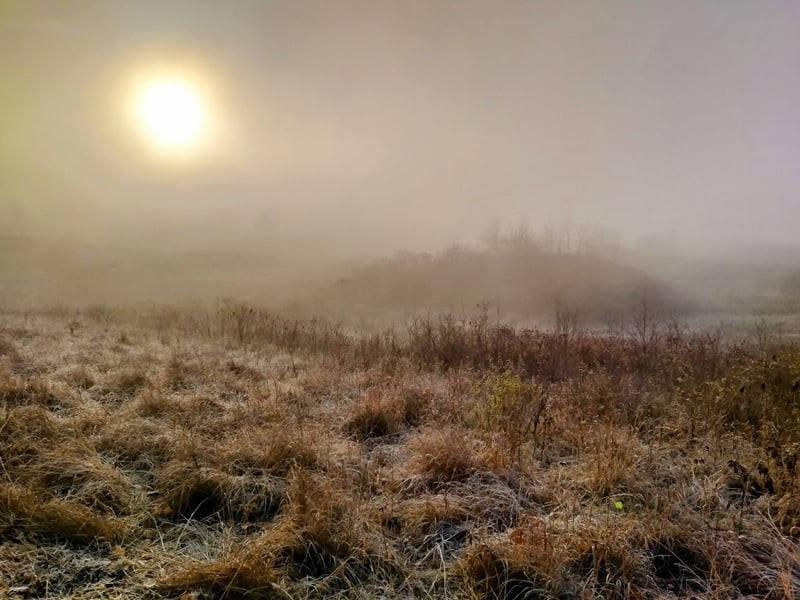
March: More light, and stirrings of spring
It’s been a disconcerting winter for those of us who love traditional Minnesota weather. And it’s made it tricky for us newsletter folks to write about what’s coming next at Frontenac State Park, weather-wise—heck, who even knows anymore?
Yet as March arrives, we find ourselves feeling Minnesotans’ traditional anticipation at spring’s imminent arrival. (Presumably, spring, unlike winter, will not bypass us.) And we’re excited about the great activities coming up this month and in the year to come.
In this issue of the newsletter (our 12th! It’s been a year now since we launched it), you’ll read about those events, as well as a review of the year past, an introduction to the fascinating concept of Umwelt, odes to Baltimore Orioles and skunks, and more. Read on!

Looking back: 2023 in the park
At our Frontenac State Park Association’s quarterly meeting in February, park manager Jake Gaster shared a rundown on 2023. Some highlights:
- 2023 attendance included 184,286 day users and 18,573 campers. Camping numbers were similar to those in previous years, but day use was down—the lowest since COVID years, but still higher than the 150,000 of pre-COVID. Why? Prolonged summer road construction that closed Hwy. 61 in both directions and intense summer heat are probably to blame. (See the graph below on park attendance through the past few years).
- The park conducted 11 prescribed burns—820 acres of the park’s 2,500 acres burned and refreshed for native prairie plant growth.
- November’s weekend hunt harvested 35 deer, more than in the past few years. (Don’t worry—there are plenty left!)
- Goats will be back in 2024, this time in paddocks to the east high along remote bluffside trails. They’ve done such a good job of eating invasive shrubs over the past few years that many areas are now ready for yearly burns.
- Thanks significantly to the FSPA, the park put on 52 programs in 2023, serving 1,410 visitors. Volunteers (many from the FSPA) gave 2,710 hours of volunteer time to the park, of which 597 hours were spent on public programs.
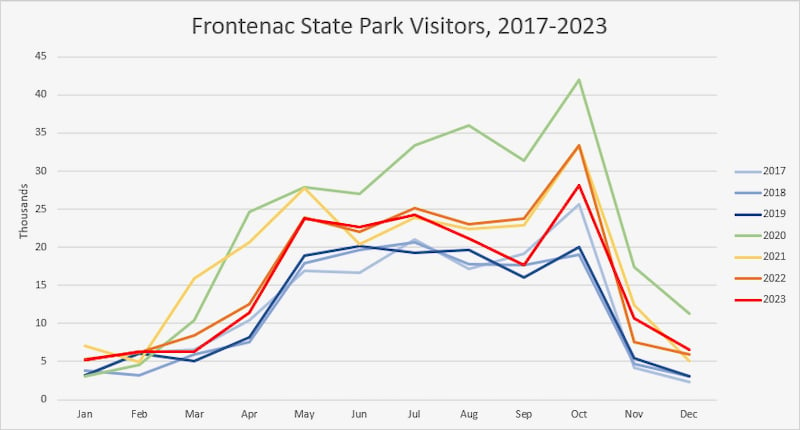
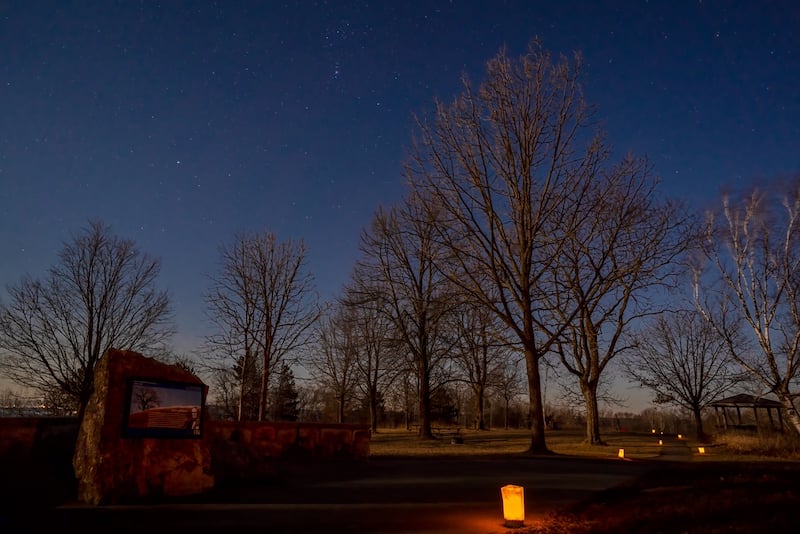
Looking ahead: Mark your calendar for 2024 events
As Jake told FSPA members at our February meeting, the park’s 2024 focus will be on its sprawling newest tract of land along County Road 2 Boulevard. southwest of Hill Avenue. (It’s so beautiful! We’ll write more about it in an upcoming newsletter.) Initial goals include restoration of natural areas and establishment of a more extensive trail system in the property. After that—depending on whether state funding can be procured—goals will include construction of a day use area with parking and other amenities, as well as creation of walk-in campsites.
Meanwhile, the park and its FSPA will present a plethora of fun, fascinating events in 2024. Here’s a list! (It’s pretty long, so the second part is at the bottom of this newsletter.)
March 2024
Saturday, March 16, 9-11 a.m.: Guided bird walk with FSPA members Janet Malotky and Steve Dietz, Sand Point Trail; meet at the Sand Point parking lot.
April 2024
Saturday, April 6, 9-11 a.m.: Guided bird walk with FSPA member Janet Malotky, leaving from campground kiosk.
Saturday, April 20, 9 a.m.-noon: Sand Point Trail spring cleanup (volunteers welcome!).
Saturday, April 27: Free park entry day; FSPA will have a welcome table with free snacks from 11 a.m. to 2 p.m. at the main picnic shelter.
Saturday, April 27, 10 a.m.-noon: Ranger Jake Gaster will lead a walk-and-talk focused on post-fire ecology, leaving from the picnic shelter.
May 2024
Saturday, May 4, 9-11 a.m.: Guided bird walk with FSPA members Janet Malotky and Steve Dietz, leaving from campground kiosk.
Friday, May 10: Governor’s Fishing Opener weekend, with Gov. Tim Walz visiting Lake City. We’ll have a guided nature walk from 1 to 2:45 p.m., leaving from the Sand Point trail parking lot.
Saturday, May 11, 10-11:30 a.m.: Guided mushroom habitat walk with FSPA member Pamela Miller, leaving from campground kiosk.
Tuesday, May 14, 10-11: Nature Explorers: A new one-hour activity program for preschoolers with interpretive naturalist Sara Holger. May’s topic is birds. Meet at the main picnic shelter. (Look for an interview with Sara and more information on her upcoming monthly children’s programs in April’s newsletter.)
Thursday, May 16, 3-4:30 p.m.: Quarterly FSPA meeting, main picnic shelter. All are welcome.
Saturday, May 25, 8-10 a.m.: Guided bird walk with FSPA members Janet Malotky and Steve Dietz at Hok-Si-La Park just north of Lake City. Meet in the Hok-Si-La parking lot.
Saturday, May 25, 9-10 p.m.: Nature walk with interpretive naturalist Bruce Ause, leaving from campground kiosk.
Sunday, May 26: Raptor program with Jackie Fallon (watch for details in upcoming newsletters).
(For activities in June and beyond, scroll to the bottom of this newsletter.)

Notes from the field: Mind your Umwelt
By Steve Dietz, Minnesota Master Naturalist volunteer
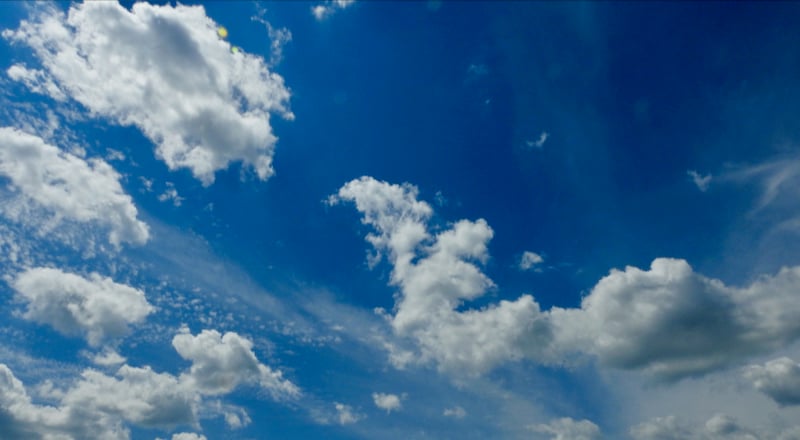
Inquiring youth are known for all kinds of philosophical musings besides "why," including about the color blue. Pointing up at a gorgeous summer sky, they might say something along the lines of: The sky may look blue to both of us, but how do we know we’re seeing the same color?
Years later, I am reminded of this conundrum by some fascinating illustrations perused while link-trawling the Internet. Who knew puffins have fluorescent bills?
I knew from reading Ed Yong’s magisterial “An Immense World” (it should be next on your reading list, if you’ve finished Bernd Heinrich”s “Winter World,” reviewed by our illustrious editor last month) that at least a partial answer is Umwelt, the German word for the world as it is perceived by a particular organism. As Yong writes:
Earth teems with sights and textures, sounds and vibrations, smells and tastes, electric and magnetic fields. But every animal can only tap into a small fraction of reality’s fullness. ... There is a wonderful word for this sensory bubble—Umwelt ... the part of those surroundings that an animal can sense and experience—its perceptual world.
For example, bees see the common black-eyed Susan with a central “target,” which attracts them. And while humans do not not fully understand why Atlantic Puffins (Fratercula arctica) have photoluminescent bills, they do, and it is possibly related to “billing behavior,” linked to sexual signaling. Northern Mockingbirds - birds in general - see a “UV-blue” sky (which is colored magenta for human consumption in the false-color photograph below).
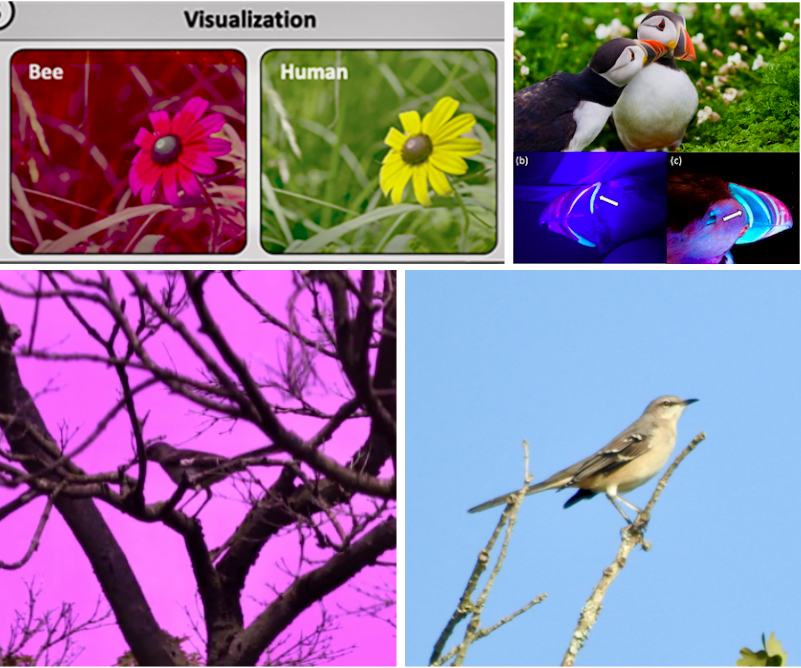
Yong describes numerous other Umwelten, such as fish that “see” directional water pressure changes—a perceptual ability inaccessible to us humans.

In her Zoomorph project, artist Lisa Jevbratt simulated an app that would allow you to use your camera phone to photograph the world more like how other species see it. When we are shown the color world of other species, which we often view as “less than” us, we learn that in fact they’re sometimes “seeing” more than we do and usually quite differently.
Jevbratt writes
“it is a humbling experience that invites us to start questioning humans’ self-proclaimed position on the top of a species hierarchy.”
Mind your Umwelt.
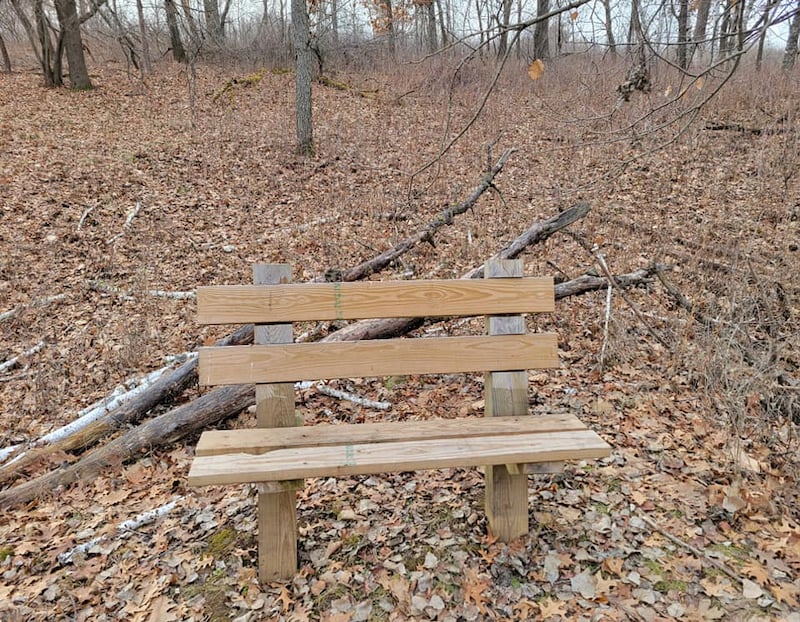
Skunks: We salute them! Er … from a distance
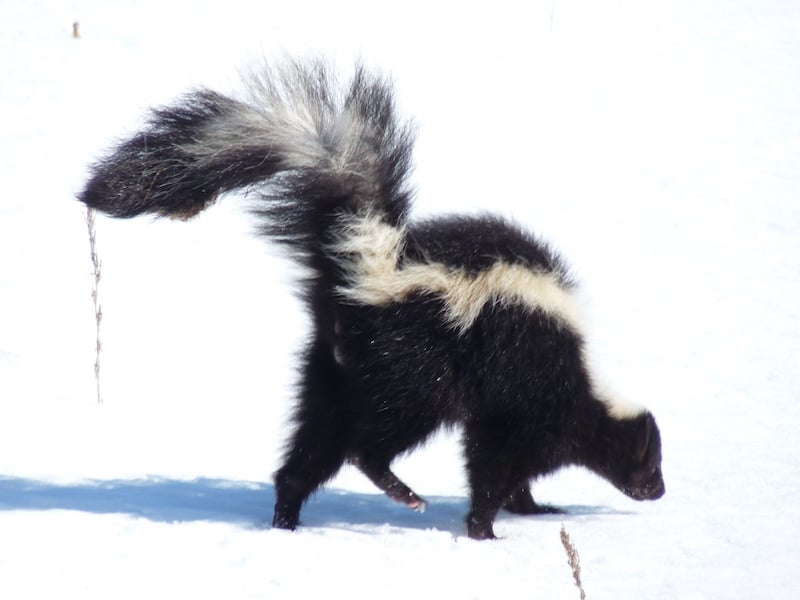
By Pamela Miller, Minnesota Master Naturalist volunteer
Long, long ago, when your newsletter editor was growing up in Old Frontenac, people routinely let their dogs run loose (a bad idea for so many reasons, most prominently because packs of domestic dogs are extremely dangerous). Our big old mutt, the lovable, hapless Alfie, occasionally slunk home with a muzzle pocked with porcupine needles that we had to pry out, or, worse, reeking of skunk. We’d bathe him in tomato juice, but he’d still be canine non grata for a few days. (Experts now say to skip the tomato juice and bathe your stinky pet with a mix of hydrogen peroxide or white vinegar, baking soda and liquid soap.)
But honestly, Alfie had it coming for messing with Mephitis mephitis—a striped skunk. We were reminded of his adventures lately when we started seeing (and smelling) signs of skunk in and around the park. They’re out of hibernation a bit early this whacko winter.
Skunks are an anomaly in the mammal kingdom, which generally prefers gray and brown fur. No camouflage for them—their dramatic coloring makes them easy to spot from half a mile away. They’ve evolved thusly because once an animal has been sprayed by a skunk, it learns to avoid that black-and-white thing like the plague (unless, like the aforementioned Alfie, it’s not that bright), saving time and trouble for both said animal and the skunk.
Other things to know about skunks, courtesy of the Minnesota Department of Natural Resources:
- They’re usually pretty easygoing. Skunks only spray when they feel trapped. And they’ll warn you—if you observe a skunk hissing, grunting and stamping its little feet, Run like a son-of-a-gun, Mabel! It’s about to blow! Skunks have the ability to emit a stream or misty cloud of that musk (we salute the scientist who stuck around long enough to record that fact).
- Skunks are largely nocturnal, using their acute sense of smell to look for food by night. They eat mice, frogs, insects, nuts, fruit, corn, carrion, honey from bee hives (they’re apparently oblivious to bee stings) and yes, garbage. They’ve been known to kill roosting chickens—boo! But they also eat huge quantities of Japanese beetles—yeah!
- In the fall, skunks chow down to fatten up, and when winter arrives, they retreat into burrows or dens, where several females and one male will curl up together for warmth and go into what’s called torpor, a metabolic slowdown that’s less intense than the deep hibernation experienced by some other creatures. When the weather warms up, they emerge for short hunts for food. That’s why we’ve seen more of them out this winter.
- In spring, female skunks isolate and dig their own little dens, where they give birth to four to six kits. They become fiercely defensive, quite willing to fight with other animals, even male skunks, to keep them at bay. The kits weigh less than an ounce apiece when born, and are nourished by their mother’s milk. Their eyes open at about four weeks, and at six weeks they emerge from the den to play and explore.
- A group of skunks is called a “surfeit,” which means too many (we salute the wry creator of that term). But since they’re largely solitary except during hibernation, a group you’d see would most likely be a mother with her cute little kits. Back away slowly, Mabel.
- Only one creature appears to be oblivious to skunk spray—the great horned owl. (Though your newsletter editor has smelled a deer or two at her bird feeder that seems to have hung around a skunk for too long.)
- Yes, skunks can harbor rabies—they’re the Minnesota mammal most likely to contract it, since a poor addled rabid animal won’t be deterred by skunk spray. We live in skunk country: Be sure to keep your pets vaccinated against rabies.
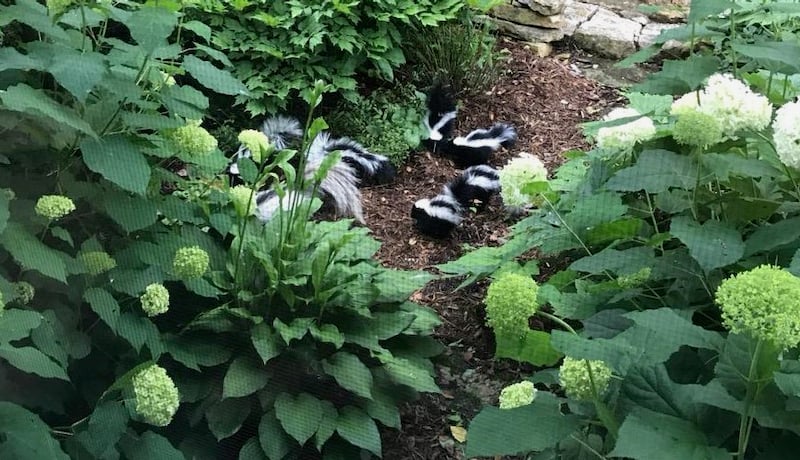
Bird notes: Our friends from … Baltimore?
By Janet Malotky, Minnesota Master Naturalist volunteer
When my husband and I were considering a move to the Driftless area, we took a stroll along the waterfront in Pepin, Wis. It was fall, and there weren’t a lot of birds along all that concrete, but several Baltimore Orioles were leapfrogging from tree to tree. We rarely saw them where we lived at the time, just west of the Twin Cities, so we were enchanted.
Baltimore Orioles are charismatic birds, easy to love with their colorful attire and bird-feeder friendliness. Fortunately for folks around here, they are a common sight and sound in Frontenac State Park from late spring to early fall.
But where are they the rest of the time?
Baltimore Orioles breed here, but overwinter from southern Mexico through Central America and northern South America. A few small populations winter in Florida. During our winter holidays, most of them are hanging out in humid tropical forests, gleaning bugs and caterpillars from the leaves, noshing on small fruits and piercing tropical flowers to sip the nectar. At least some are surrounded by the sounds of oropendolas, macaws, toucans, and monkeys.
Even in this strangely warm Minnesota winter, that sounds like heaven to me. Why would they ever think of leaving?
The answer: bugs, bug-adjacent critters, and nectar-producing flowers.
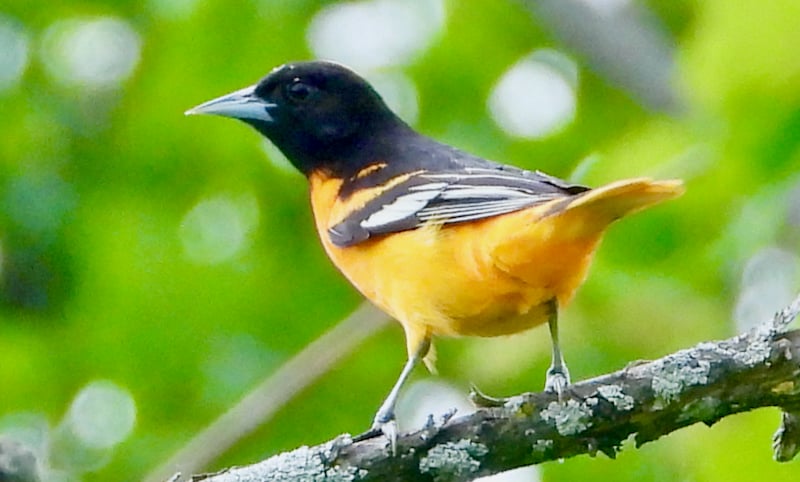
By early February, their migratory itch sets in. Changes in the length of day—even the slight changes near the equator—cue them to head north toward our seasonal bounty of emerging caterpillars, insects and flowers. Those annoying mayflies that swarm (harmlessly) from the river? The tiny caterpillars dangling by silky threads from the oak tree? Yummy! Just the things to feed the kids!
By the time you’re reading this in March, Baltimore Orioles winging northward along the Atlantic coast of Central America will be arriving in Mexico. By April, they’ll be in Texas. From there, they spread across the United States east of the Rockies in a northward surge to their breeding grounds.
Our birds head up the Mississippi flyway. We’ll see them in the park in early May. When they arrive, they will have traveled up to 2,500 miles. Some fly non-stop across the gulf of Mexico—that’s 500 miles!
You can bet they’ll be hungry when they get here. Go ahead and put out some grape jelly if you’d like. They love it, and it’s instant energy for them after their long journey. They’ll enjoy jelly all summer long, but once their chicks hatch, they’ll increasingly turn to more protein-rich sources of food. This is where migration timing is crucial.
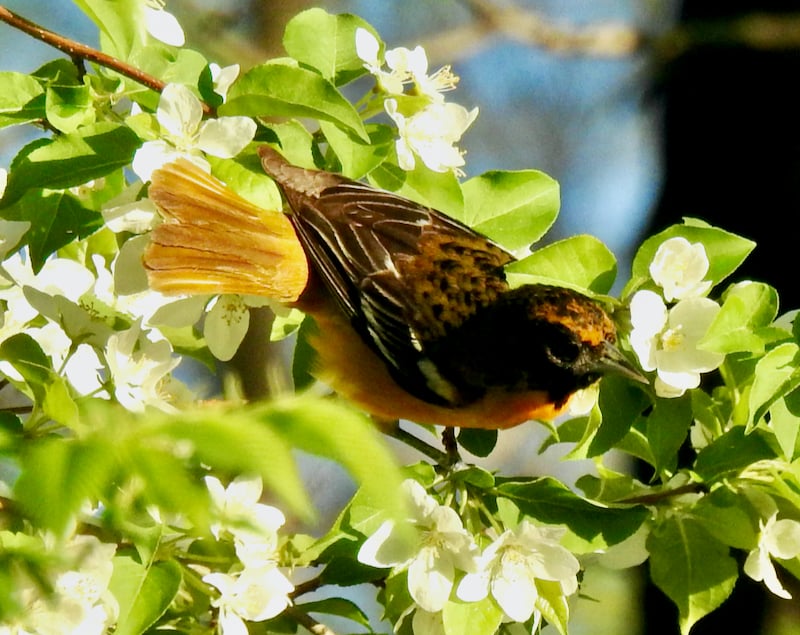
Baltimore Orioles arrive, build nests, incubate eggs, and hatch their chicks just when there is a profusion of the insect and larval food they need to successfully raise their young. That is how it has worked forever.
But the changing climate is shifting emergence dates for flowers, insects, and larva. There is real concern that these shifts will no longer align with migration patterns, greatly impacting the reproductive success of our migratory birds. Grape jelly is not even a Band-Aid in the face of this threat. Protecting our birds is going to require us to rally every which way we can: in our own backyards, yes—but also on the national and international stage.
I will never forget the sad eeriness of walking through parks in parts of China where birdsong was piped in electronically because there were no more living birds there. That cannot be our future, nor the future for our Frontenac State Park Orioles.
Help us restore our park’s one-of-a-kind sign!

For many of us, whether we were coming back from a long trip or just returning from a grocery run or heading up into the park for some hiking and camping, we knew we were in treasured territory when we’d see our brightly colored, one-of-a-kind Frontenac State Park sign.
Sadly, in 2023 a replacement sign blew down in high winds and the sign underneath, which was raised on the 50th anniversary of the park in 2007, is rotting and coming apart, which is why the newer sign had been overlaid.
Even sadder, if understandable, Minnesota’s DNR is standardizing all park signs across the state and will not fund “non-compliant signage.” The standardized signs, while smart-looking, lack the color and uniqueness of our historical sign.
We love our unique sign! So your Frontenac State Park Association is seeking to help raise $5,000 to install a new—and sturdier—rendition of the iconic park sign we all know and love. Please consider sending a tax-deductible contribution in any amount to: Treasurer, Frontenac State Park Association, 29223 County 28 Blvd., Frontenac, MN 55026-1056, and note “FSP sign” on your check. All donors will be acknowledged in the FSPA newsletter at the conclusion of the campaign.
Thank you! And if you have any questions, do not hesitate to contact Steve Dietz, president of the Frontenac State Park Association (stevedietz@duck.com).

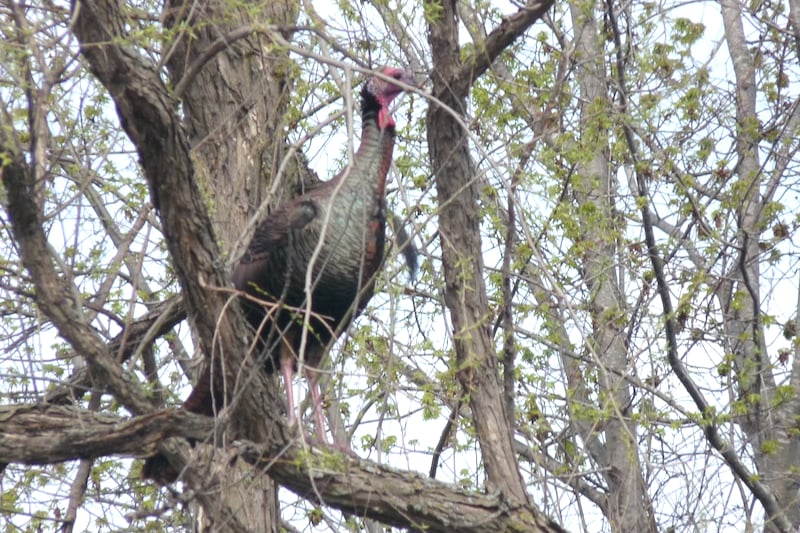
Poem of the month
*Note: We had stashed away Ralph Waldo Emerson’s magnificent poem “The Snowstorm” for March, but now doubt we’ll have a bonafide snowstorm to honor it. So we picked a less dramatic poem for what’s going to be a month of uncertain weather.
“Thaw”
Over the land freckled with snow half-thawed
The speculating rooks at their nests cawed
And saw from elm-tops, delicate as flower of grass,
What we below could not see, Winter pass.
—Edward Thomas (British; 1878-1917)

More park activities! (continued from above)
Here is our list of 2024 park activities from June to December, continued from above:
June 2024
Saturday, June 8: Free park entry day; FSPA will have a welcome table from 11 a.m. to 2 p.m. at the main picnic shelter.
Saturday, June 8, 9-11 a.m.: Guided bird walk with FSPA members Steve Dietz and Janet Malotky, leaving from campground kiosk.
Saturday, June 8, 10-11 a.m.: Nature walk with interpretive naturalist Bruce Ause, leaving from campground kiosk.
Tuesday, June 11, 10-11 a.m.: Nature Explorers: Wildflowers, for preschoolers, with interpretive naturalist Sara Holger, main picnic shelter.
Saturday, June 15, 10-11 a.m.: Nature walk with interpretive naturalist Bruce Ause, leaving from campground kiosk.
Saturday, June 15, 10 a.m.-noon: Ranger Jake Gaster leads a walk-and-talk on post-fire ecology, leaving from campground kiosk.
Saturday, June 22, 9-11 a.m.: Guided bird walk with FSPA members Steve Dietz and Janet Malotky along Prairie Loop Trail, leaving from park headquarters.
Saturday, June 22, 10-11 a.m.: Nature walk with interpretive naturalist Bruce Ause, leaving from campground kiosk.
Saturday, June 29, 10-11 a.m.: Nature walk with interpretive naturalist Bruce Ause, leaving from campground kiosk.
July 2024
Saturday, July 6, 10-11 a.m.: Nature walk with interpretive naturalist Bruce Ause, leaving from campground kiosk.
Saturday, July 6, 7 p.m.: Starry, Starry Night program with the Rochester Astronomy Club, beginning with a 45-minute presentation at the picnic shelter before star viewing from the main parking lot.
Tuesday, July 9, 10-11 a.m.: Nature Explorers: Insects, for preschoolers, with interpretive naturalist Sara Holger, main picnic shelter.
Saturday, July 13, 9-11 a.m.: Guided bird walk with FSPA members Steve Dietz and Janet Malotky, leaving from campground kiosk.
Saturday, July 13, 10-11 a.m.: Nature walk with interpretive naturalist Bruce Ause, leaving from campground kiosk.
Saturday, July 20, 10-11 a.m.: Nature walk with interpretive naturalist Bruce Ause, leaving from campground kiosk.
Saturday, July 20: Butterfly count (watch for details in upcoming newsletters).
Saturday, July 27, 9-11 a.m.: Guided bird walk with FSPA members Steve Dietz and Janet Malotky, Sand Point Trail. Meet at the Sand Point Trail parking lot.
Saturday, July 27, 10-11 a.m.: Nature walk with interpretive naturalist Bruce Ause, leaving from campground kiosk.
Saturday, July 27: Mussel program (watch for details in upcoming newsletters).
August 2024
Saturday, Aug. 3, 9-11 a.m.: Ranger Jake Gaster leads a talk-and-walk on native plants, leaving from campground kiosk.
Saturday, Aug. 3, 10-11 a.m.: Nature walk with interpretive naturalist Bruce Ause, leaving from campground kiosk.
Saturday, Aug. 10, 9-11 a.m.: Guided bird walk with FSPA members Steve Dietz and Janet Malotky, leaving from campground kiosk.
Saturday, Aug. 10, 10-11 a.m.: Nature walk with interpretive naturalist Bruce Ause, leaving from campground kiosk.
Tuesday, Aug. 13, 10-11 a.m.: Nature Explorers: Wildlife, for preschoolers, with interpretive naturalist Sara Holger, main picnic shelter.
Thursday, Aug. 15, 3-4:30 p.m.: FSPA quarterly meeting, main picnic shelter.
Saturday, Aug. 17, 10-11 a.m.: Nature walk with interpretive naturalist Bruce Ause, leaving from campground kiosk.
Saturday, Aug. 24, 9-11 a.m.: Guided bird walk with FSPA members Steve Dietz and Janet Malotky along Prairie Loop Trail, leaves from park headquarters.
Saturday, Aug. 24, 10-11 a.m.: Nature walk with interpretive naturalist Bruce Ause, leaving from campground kiosk.
Saturday, Aug. 31, 10-11 a.m.: Nature walk with interpretive naturalist Bruce Ause, leaving from campground kiosk.
Saturday, Aug. 31, 7 p.m.: Starry, Starry Night program with the Rochester Astronomy Club, beginning with a 45-minute presentation at the picnic shelter before star viewing from the main parking lot.
September 2024
Sunday, Sept. 1: Falcon program with Jackie Fallon (watch for details in upcoming newsletters).
Saturday, Sept. 7, 10-11 a.m.: Nature walk with interpretive naturalist Bruce Ause, leaving from campground kiosk.
Saturday, Sept. 7, 10 a.m.-1 p.m.: Seed-gathering work day for FSPA members (volunteers welcome!).
Tuesday, Sept. 10, 10-11 a.m.: Nature Explorers: Seeds, for preschoolers, with interpretive naturalist Sara Holger, main picnic shelter.
Saturday, Sept. 14, 9-11 a.m.: Guided bird walk with FSPA members Steve Dietz and Janet Malotky, leaving from campground kiosk.
Saturday, Sept.14, 10-11 a.m.: Nature walk with interpretive naturalist Bruce Ause, leaving from campground kiosk.
Saturday, Sept. 21, 10-11 a.m.: Nature walk with interpretive naturalist Bruce Ause, leaving from campground kiosk.
Saturday, Sept. 28, 9-11 a.m.: Guided bird walk with FSPA members Steve Dietz and Janet Malotky, Sand Point Trail.
Saturday, Sept. 28, 10-11 a.m.: Nature walk with interpretive naturalist Bruce Ause, leaving from campground kiosk.
October 2024
Saturday, Oct. 5, 10-11 a.m.: Nature walk with interpretive naturalist Bruce Ause, leaving from campground kiosk.
Tuesday, Oct. 8, 10-11 a.m.: Nature Explorers: Trees, for preschoolers, with interpretive naturalist Sara Holger, main picnic shelter.
Saturday, Oct. 12, 10-11 a.m.: Nature walk with interpretive naturalist Bruce Ause, leaving from campground kiosk.
Saturday, Oct. 12, 11 a.m.-noon: Fungi habitat walk with FSPA member Pamela Miller, leaving from campground kiosk.
Saturday, Oct. 19, 10-11 a.m.: Nature walk with interpretive naturalist Bruce Ause, leaving from campground kiosk.
Saturday, Oct. 19, 10 a.m.-noon: Guided bird walk with FSPA members Steve Dietz and Janet Malotky, leaving from campground kiosk.
Saturday, Oct. 26, 10-11 a.m.: Nature walk with interpretive naturalist Bruce Ause, leaving from campground kiosk.
November 2024
Friday, Nov. 9, 9-11 a.m.: Guided bird walk with FSPA members Steve Dietz and Janet Malotky, Sand Point Trail. Meet at the Sand Point Trail parking lot.
Saturday, Nov. 16, 9 a.m.-noon: Invasives removal work day for FSPA members (volunteers welcome!).
Friday, Nov. 29: Free park entry day; FSPA will have a welcome table from 11 a.m. to 2 p.m. at the main picnic shelter.
December 2024
Saturday, Dec. 7, 9-11 a.m.: Guided bird walk with FSPA members Steve Dietz and Janet Malotky, Sand Point Trail. Meet at the Sand Point Trail parking lot.
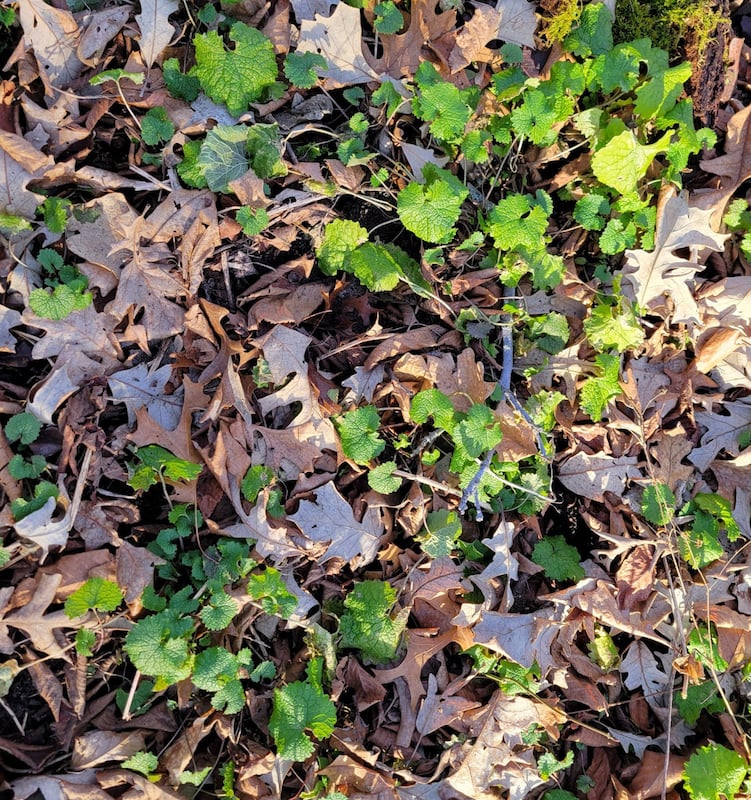
Interested in joining the FSPA?
We’d love to have your support (dues are $25 per year for an individual, $35 for dual/family membership). Here is a link.
A reminder that joining us occasionally to help the park out with volunteer efforts is awesome too, even if you’re not a member. The FSPA’s goal is simply to share our love of Frontenac State Park with as many people as possible.
To sign up to regularly receive this monthly newsletter, click on “Subscribe” below. Feel free to send questions or comments to your newsletter editor at pamelamarianmiller@gmail.com. Questions about the FSPA? You can reach FSPA chair Steve Dietz at stevedietz@duck.com.
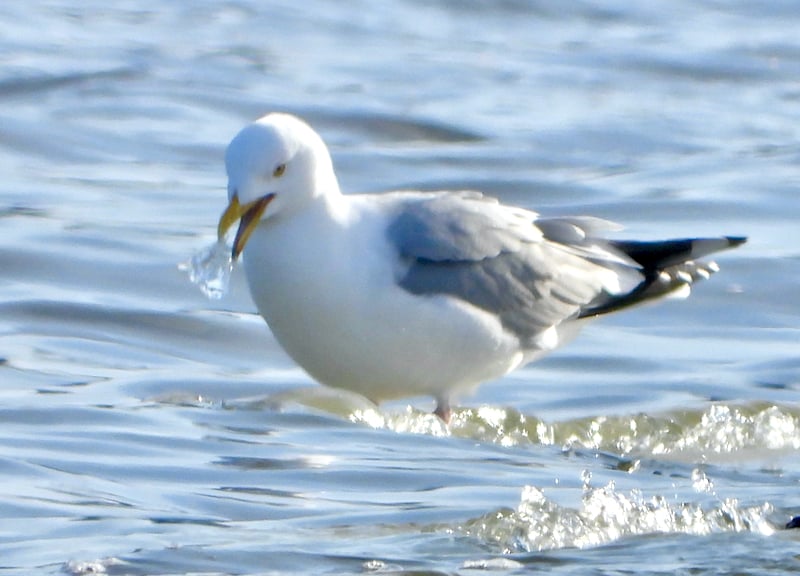
Handy links for more information and education
Frontenac State Park website
Frontenac State Park Association website
If you take pictures in the park, tag us on Instagram
Frontenac State Park bird checklist
Frontenac State Park on iNaturalist
Parks & Trails Council
Website for our township, Florence Township
Minnesota Master Naturalist program
Red Wing Environmental Learning Center
Lake City Environmental Learning Program
Visit Lake City
Frontenac State Park staff
Jake Gaster, park manager; Amy Jay, assistant park manager; Amy Poss, lead field worker
Parting shots
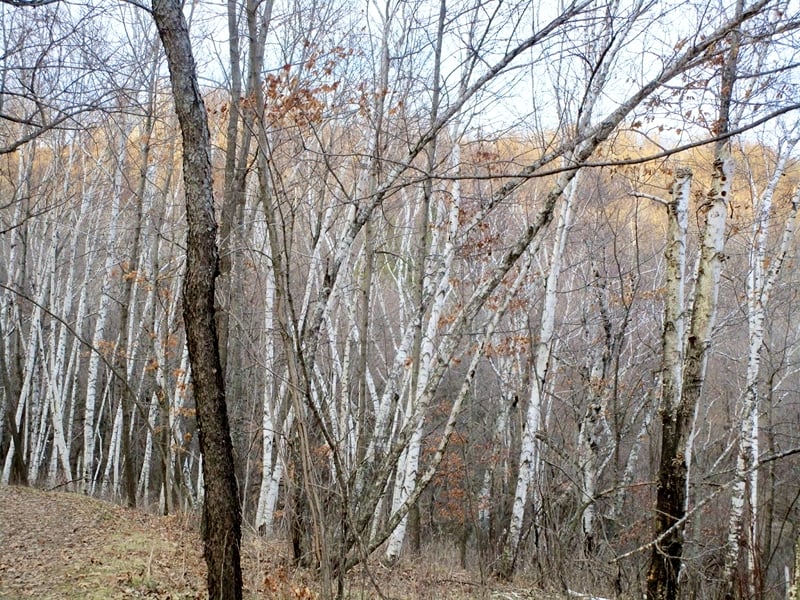
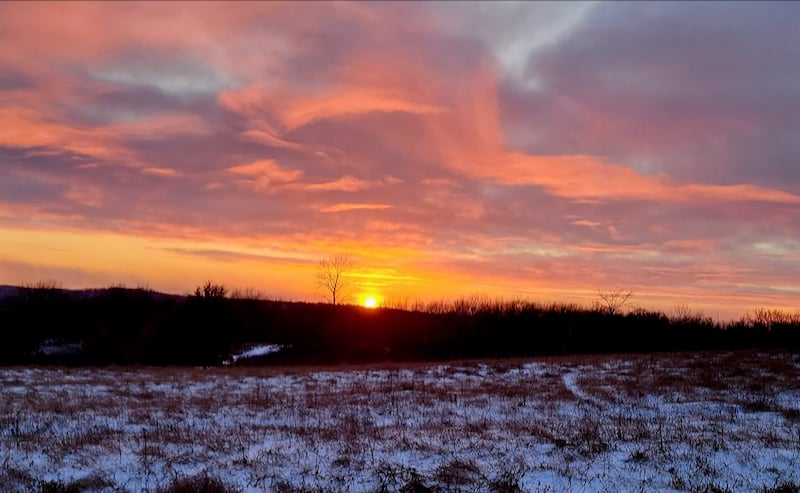
Thank you, readers and park visitors!
This is Volume 2, No. 3 of the Frontenac State Park Association newsletter, which was launched in April 2023.